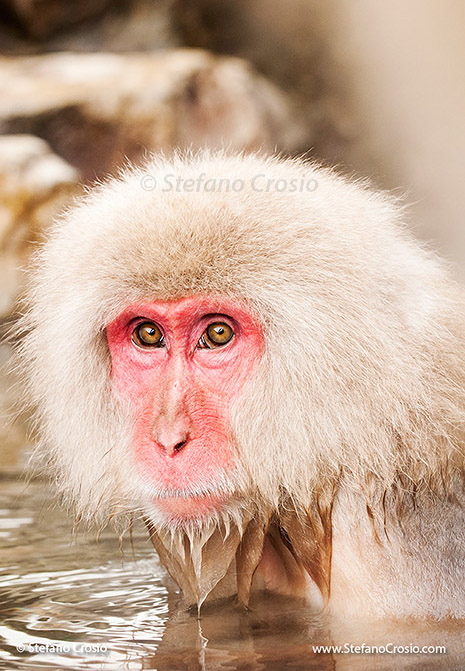
When I traveled to Japan on a wildlife photography trip, one of the highlights was photographing the Japanese snow monkeys.
These monkeys (which are actually macaques – Macaca fuscata) are a species that is indigenous to Japan. On Japan’s big island (Honshu), they live in two main areas, one of which is a mountainous region in the center of the island, by the town of Nagano, at an elevation of about 850 mt/2,750 ft.
There, whoever is interested in observing or photographing the snow monkeys needs to hike to Jigokudani Yaenkoen National Park (which supposedly means “Hell’s Valley”) and then to the thermal pool, which is one of the monkeys’ favorite places to congregate in winter. This is because this region of Japan gets very cold in the winter, with temperatures that drop to -15 C/5 F, and therefore the monkeys seek comfort from the warm waters coming from natural hot springs that are heated by the underground activity of the Shiga Kogen volcano.
Actually, the whole use of the thermal pool by the snow monkeys started relatively recently and marked a discovery in the monkeys’ adaptive skills. While beforehand no snow monkey had been observed in the thermal pool, in the Sixties one monkey ventured into the hot spring waters to collect seeds that had been thrown in by the Park’s keepers. The monkey evidently enjoyed not only the free meal, but also the warm water and this led to imitation by the other monkeys in its troop and eventually by virtually the entire population of that area, that took on the habit.
If you happen to travel to Japan, I wholeheartedly recommend you pay a visit to the snow monkeys, as they are very interesting (and often times downright funny) to observe, with their human-like behavior. Plus, they make for great photo subjects! The one captured in this image reminded me of Planet of the apes, as if it were crawling out of the pool thinking “I’m coming to get you!”
If you want to learn more about the Japanese snow monkeys, I suggest you start by checking this Web site out.
If you would like to see more images of mine, feel free to browse my Galleries.
As per my copyright notice, please respect my work and do not download, reproduce or use the image above without first seeking my consent. Thank you 
![]()





